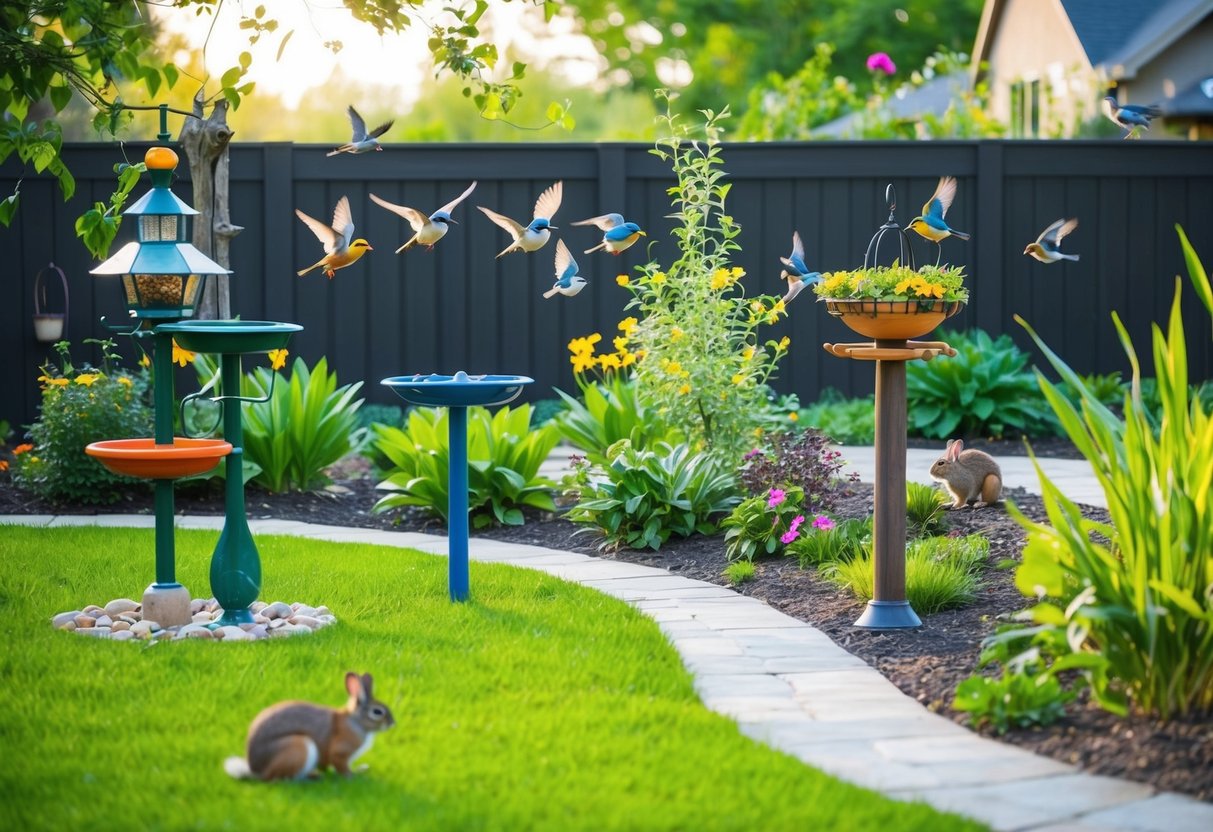
Year-Round Maintenance and Bird Care
A bird-friendly backyard requires continuous attention. Maintenance tasks like weeding, cleaning, and feeding are essential. Regularly observing bird health and habitat condition will aid in creating a safe and supportive environment for our feathered friends.
Seasonal Chores: Weeding, Cleaning, and Feeding
Maintaining a bird-friendly backyard involves timely chores throughout the year. Weeding is crucial as invasive plants can disrupt natural habitats and reduce food availability. Removing these plants ensures native flora thrives, providing suitable shelter and nourishment.
Bird feeders must be refilled and cleaned regularly to prevent mold and bacteria buildup. This reduces the risk of disease among birds and ensures a consistent food supply. Selecting the right birdseed mix for the local bird species will enhance attraction and support.
Proper seasonal yard cleaning involves removing debris and fallen branches, which can harbor pests or seedlings that alter the habitat balance. Regular watering during dry periods ensures a healthy ecosystem that can sustain various bird species year-round.
Monitoring Bird Health and Habitat Conditions
Observation is key to a thriving bird habitat. Monitoring nesting birds is crucial; any irregular behavior or visible injuries should be noted, as this might indicate environmental issues. Preserve safe nesting sites by ensuring they are undisturbed during breeding seasons.
Check for parasites like mites in nesting areas. Keeping an eye on changes in bird population size or diversity can signify underlying problems. Adjusting food sources or shelter can be necessary if adverse conditions are observed.
Regular assessment of plants for signs of disease or poor health is equally important. Healthy plants maintain the natural balance of the habitat, ensuring that birds have ample resources. Periodic soil checks might be needed to address nutrient deficiencies affecting plants.
Community and Conservation
Engaging with local communities and participating in conservation initiatives can significantly enhance efforts to attract and support birdlife. These activities not only benefit wildlife but also foster a sense of shared responsibility and awareness.
Participate in Local and National Bird Counts
Bird counts are an effective way for individuals to contribute to bird conservation. One example is the Great Backyard Bird Count, an annual event that encourages bird enthusiasts to record sightings and submit data.
This information helps organizations like the Audubon Society track bird populations and migration patterns. Participating can be a simple yet impactful way for individuals to contribute to scientific research.
In joining these counts, individuals need only dedicate a few moments of their time. Observing and recording bird activity in local areas provides valuable data that helps shape conservation strategies.
Such initiatives not only involve citizens in meaningful conservation work but also enhance public knowledge of avian species. Through these efforts, communities can unify in their commitment to preserving natural habitats.
Educating Neighbors and Promoting Conservation
Education is a crucial part of conservation. By sharing information and resources with neighbors, community members can collectively encourage bird-friendly practices. Highlighting the importance of native plants and providing simple tips on reducing pesticide use are effective ways to support birdlife.
Organizing workshops or talks with local experts can further stimulate interest and action. Community groups and schools can partner with conservation organizations like the Audubon Society to host events and campaigns.
These activities raise awareness and offer practical guidance on fostering environments that attract birds. Informed communities are better equipped to implement strategies that positively impact local ecosystems.
Through ongoing education and promotion, neighborhoods can foster a culture that prioritizes the well-being of wildlife and natural habitats.